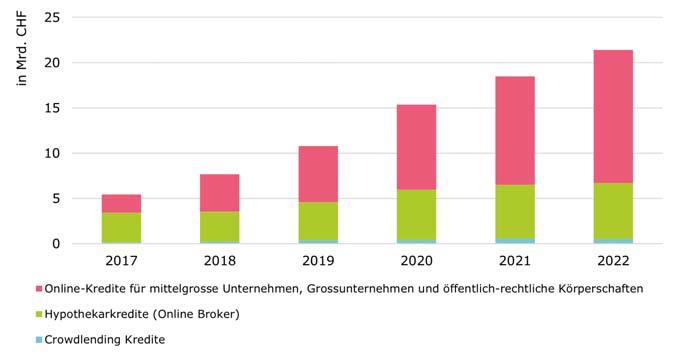Swiss pension funds in comparison: Corona shows little impact
The year 2020 was also a special one on the financial markets: a brilliant start was followed by a real crash in March 2020 due to the Corona pandemic. But share prices recovered just as quickly. This was a blessing for the pension funds, as the invested retirement assets continued to develop favorably. We show a comparison of some Swiss pension funds.

The Corona pandemic does not seem to have harmed pension assets - on the contrary. A survey we conducted among the most important semi-autonomous pension funds and full insurers shows a positive overall picture: When asked about the effects of the corona pandemic on performances and investment strategies, the answers were more or less unanimous: There were hardly any. Simon Herzer from the Gemini Collective Foundation wrote: "Overall, the financial markets performed significantly better in 2020 than could initially have been expected following the outbreak of the corona pandemic." Also at the pension fund Spida the Corona pandemic had no negative impact, on the contrary: "The pension fund continued to grow in 2020, with retirement assets increasing by 8.1% . In addition, many new connections were gained." Asga admits to a slump in March 2020, but says: "In March 2020, we also suffered significant losses on fixed assets, but these were made up by the end of the summer. Particularly in Q4 2020, equity markets then increased, giving us a significant positive return."

Trend towards alternative investments and "concrete gold
The investment strategies of the pension funds hardly changed due to the Corona pandemic. As the stock markets in particular recovered quickly, there was no need for action in this regard. A further shift to alternative investments or to real estate, the "concrete gold", can be observed. Within the limits set by the legislator for the investment guidelines for the 2nd pillar, the pension funds are doing their utmost to optimize their allocations on an ongoing basis. The following statement is representative of this Allianz Suisse: "As a long-term investor, Allianz Suisse pursues the goal of achieving the most attractive and secure return possible with limited risk, so that we can fulfill the guarantees promised to clients at all times and offer additional return opportunities. The addition of intrinsic assets such as equities and real estate offers higher return opportunities compared to low-risk bonds." This strategy also seems to be the right way forward for other pension funds, such as the Pension Fund Profond writes: "Our strong focus on equity and real estate investments is the right way to go in the long term and thus also in the current situation, we are convinced of that, and the figures of the last 30 years prove us right."
But some Swiss pension funds have adjusted their strategies in the short term, such as the Helvetia (see also below): There, the share of Global equities was increased and implemented with a sustainable strategy, as they say. Or the Groupe Mutuel reduced its exposure to foreign currencies, and Previs reports an expansion in direct real estate.
How Swiss pension funds optimize their costs
Policyholders should therefore continue to benefit from a positive underlying sentiment on the stock markets. The pension funds, on the other hand, are moving cautiously because - as Michael Krähenbühl, Managing Director of Proparis - "it would be nice if the situation stabilizes or that 2021 goes down in history as another good investment year, but that depends very much on the current pandemic."
But it is not only the positive performance of the invested funds that benefits the insured. The majority of pension funds are looking to improve their cost structures, for example by simplifying services, e.g. through online tools. The management costs of real estate and alternative investments are also the subject of ongoing optimization, which ultimately benefits the insured.
Reduction of non-systemic redistribution
The legal requirements in the 2nd pillar continue to force all providers to carry out a high, non-systematic redistribution from the active insured to pension recipients. With the introduction of the new collective life tariff at the beginning of 2020, Helvetia, following other pension funds, has therefore also used its own room for maneuver and implemented various measures to reduce redistribution. Important elements of the new tariff are the gradual reduction of the conversion rate with crediting principle and selective premium increases. Thanks to the new tariff, Helvetia has succeeded in reducing the redistribution in its own portfolio. However, this remains at a high level of CHF 119 million in total (2019: CHF 185 million), according to Helvetia.
Helvetia is one of the few pension funds that still offers the full insurance model. However, the semi-autonomous solution Helvetia LOB Invest is being developed in parallel. Although only 4 percent of the connections are now on its account, the trend is clearly on the rise: "Since 2016, the strategically intended shift from full insurance to equity-preserving business has been taking place," says Helvetia. Semi-autonomous solutions are thus being promoted, while the acceptance policy for full insurance, taking into account expected annuitization losses, tends to be handled more restrictively. This is also clearly reflected in figures: The share of connections to full insurance fell from 61 to 54 percent.
The persistently high level of redistribution shows that a reform of the occupational benefit scheme is still imperative and urgent. Anja Göing-Jaeschke, Head of Actuarial Life Switzerland at Helvetia, explains: "The framework conditions of the 2nd pillar, such as conversion rate and minimum interest rate, do not reflect the demographic development and the extremely low interest rates. Only by adjusting the framework conditions can the systemic crisis in the 2nd pillar be overcome." Hedwig Ulmer, Head of Pension Plans and Member of the Executive Management Switzerland of Helvetia, adds: "With an initial reduction of the conversion rate to 6.0 percent, the core of a BVG reform has been on the table for years. It is now up to politicians to integrate this as quickly as possible into a reform proposal that is capable of gaining majority support."
A detailed dossier on the subject of occupational pension provision can be found in the ORGANISATOR print edition 5/2021. Order option here: www.organisator.ch/abo-bestellung/









